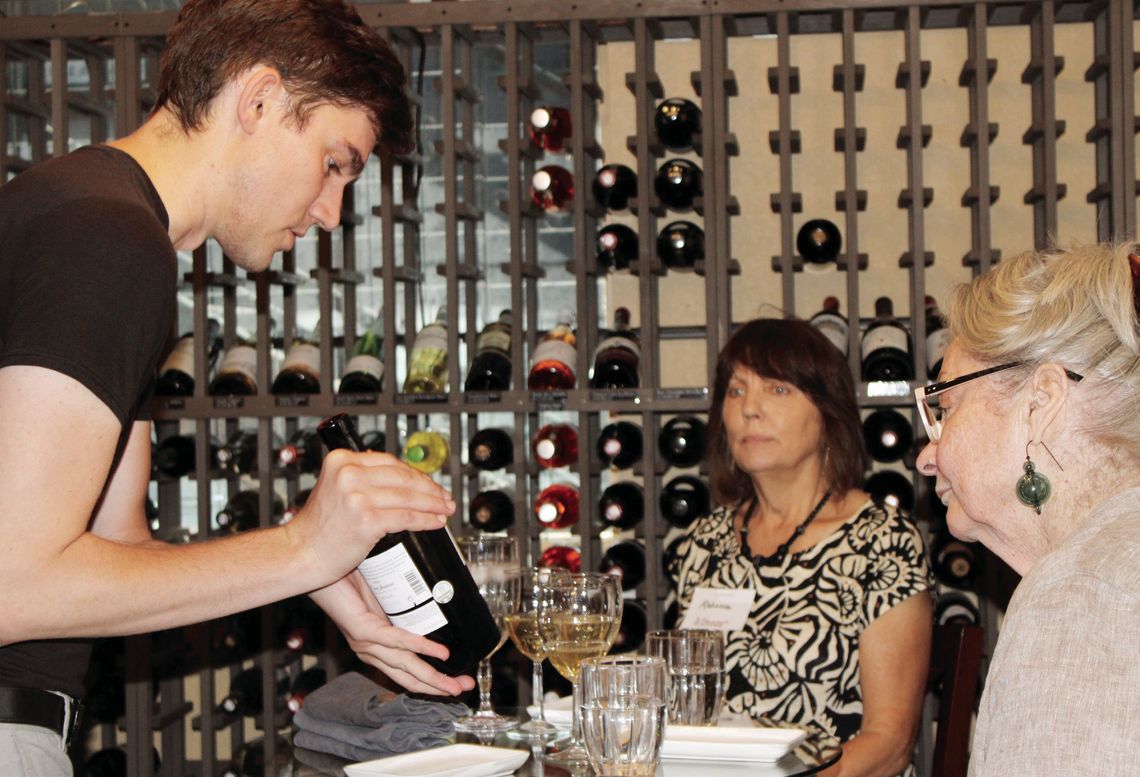SMALL BUSINESSES
Lifelong Learning wine tasting provides educational opportunity
Wine comes in a variety of types with varying degrees of quality, bitterness and dryness as well as a host of different flavors and well-matched food pairings. Lifelong Learning SMTX, along with new wine bar tasting room Wineaux, located at 314 E. Hutchison St., hosted a wine tasting and educational opportunity. Wineaux is a local wine shop and bar that allows you to take the bottles home or drink it in house, and it's nestled a block away from the San Marcos River.
Peggy Jones, Wineaux owner, said it's pivotal to understand that all flavors found in the wine come from the grapes themselves and the barrels in which they are fermented.
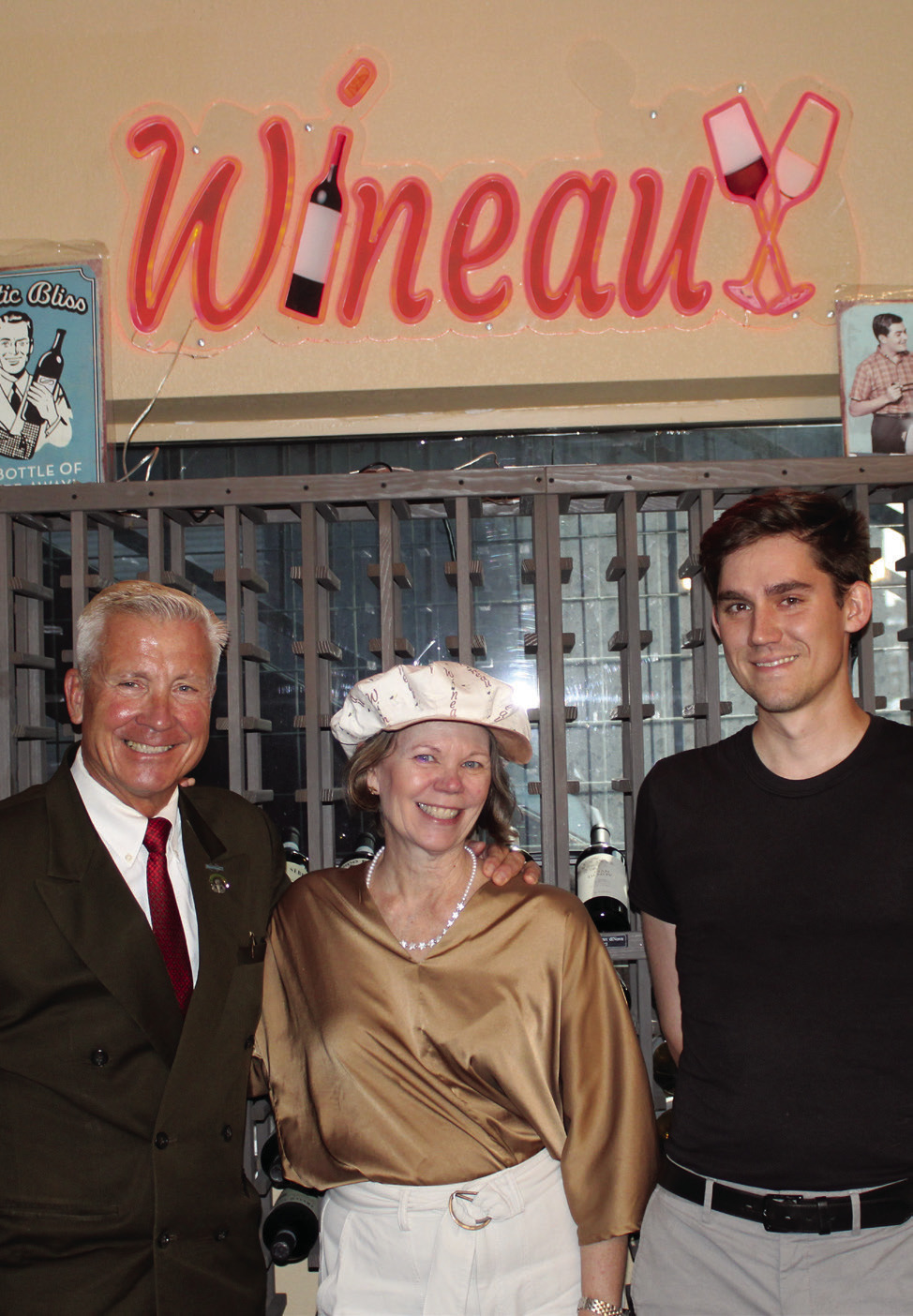
Above, Rutherford Griffin presents the wine to Rebecca Montgomery and Becky Duval Reese. Below, Selling wine is a family affair. Pictured is Mike Jones and his wife and Wineaux Owner Peggy Jones and Rutherford Griffin, Peggy Jones’ son and sommelier. Daily Record photos by Shannon West
Grapes used for wine are not the same as the ones used for eating.
“Viticulture is the process of growing the grapes. Now, what makes a grape for wine different than you going into the local H-E-B and picking up a bunch of grapes? Well that's a different variety. Those table grapes are not used to make wine, not ever. They're plumper. They're fuller. They don't have the tannin structure,” Jones said. “If you see [grapes] on an overhead trellis, and they're hanging, those are the kind that they used to go into the stores that you got at the table. If they're on the rows, they're probably growing those for wine production. So it's a very distinct difference in how they grow them, the strain of the grapes and all of that. There are nearly 10,000 varieties of grapes for wine. This is why we see so many different types of wines that are available. So when you're tasting it, you're really tasting what is from the earth right there in that location.”
Jones said the dryness, color, flavor and aromas can be attributed to the skin of the grape whereas the pulp (inside of the grape) contributes to the sugar content and acidity of the wine.
“All of the interiors are about the same color. … White wines aren't kept with the skins of the grape,” Jones said. “What makes it sweet is sugar. So either the sugar comes directly from the grapes, from the pulp or it is added. And it can be both.”
Jones pointed to the barrels as additional contributors to the flavor profile of the wine, which can be made with wood, stainless steel, concrete or Terra Cotta.
“Especially with the white wines, the wood barrels are going to give off a certain flavor from the wood. They burn the staves — the vertical slats. They burn the interior of those, and it gives it that smoky flavor. And it also gives it the oak and the vanilla flavor if it's a French wine barrel. If it's an American wine barrel, you're going to get the oak, but you're also going to get a taste of coconut,” Jones said, adding that when materials other than wood are used “what you have is the absence of those flavors.”
Jones discussed sulfites in wine, which all wines contain. She said there is no medical basis for the claim that sulfites lead to a headache, and sulfites can be found in a number of common foods and drinks.
“All wine has some level of sulfites. That is what the preservative is. It occurs naturally, and they can't exactly remove it,” Jones said. “If they add it, specifically to preserve the color and the taste, then they must put on there that it contains sulfites, and it's over 14 parts per million. Sulfites are also in pickles, dried fruit, soy sauce, baked goods, canned vegetables, seafood — all seafood — and juices.”
Jones said that histamines, which can be found in the grape skins, as well as tannins and general dehydration could be the contributors of a postwine- night headache.
“Histamines could be dilating the blood vessels in your head, and that might give you a headache. It could also cause your significant other to start snoring at night [because of the] drainage,” Jones said, adding that tannins can be blamed for a higher release of serotonin in the brain. “Lower quality wines often contain compounds that interfere with serotonin, and they are highly processed. … In comparison, in wines made with natural processes there may be fewer tannins. Tannins are also found in dark chocolate, as well as in berries and nuts. The other thing that can cause you to have the headache is the dehydrating effect of alcohol in general.”
Jones discussed food pairings. She pointed out that a wine with a higher alcohol content is going to make a spicy dish even spicier, so that one can either avoid or welcome the pairing depending on preference. The goal with food pairing is to match the intensity of the wine to the intensity of the dish.
“You want to look at how the dish is cooked, what the elements are in it and pair it accordingly,” Jones said. “So if you have a really acidic wine, but you have salty foods, it helps to reduce that level of the acidity. … If you're talking about [cooking] something that's high in animal fats, you’re going to want a stronger red wine as opposed to something that's very light and airy. The animal fats will help with the tannins, so they'll reduce the level of dryness. … Fat loves tannin. Tannin loves fat. … Sugary foods want [to pair with] sugary-style foods or alcohol.”
According to Jones, another indicator of a good pairing can be attributed to the saying “what grows together goes together.” For example, a wine made with grapes that are grown next to a cattle ranch will pair well with beef, and a wine made with grapes grown next to rosemary will pair well with rosemary mashed potatoes.
Lifelong Learning SMTX is a nonprofit that provides accessible nocost/ low-cost experiences for San Marcos-area older adults to explore, question, learn and engage with others. If you would like more information or to sign up for the mailing list as to not miss any upcoming courses email Dr. Marianne Reese, Lifelong Learning founder and director, at lifelonglearningsm@ gmail.com.
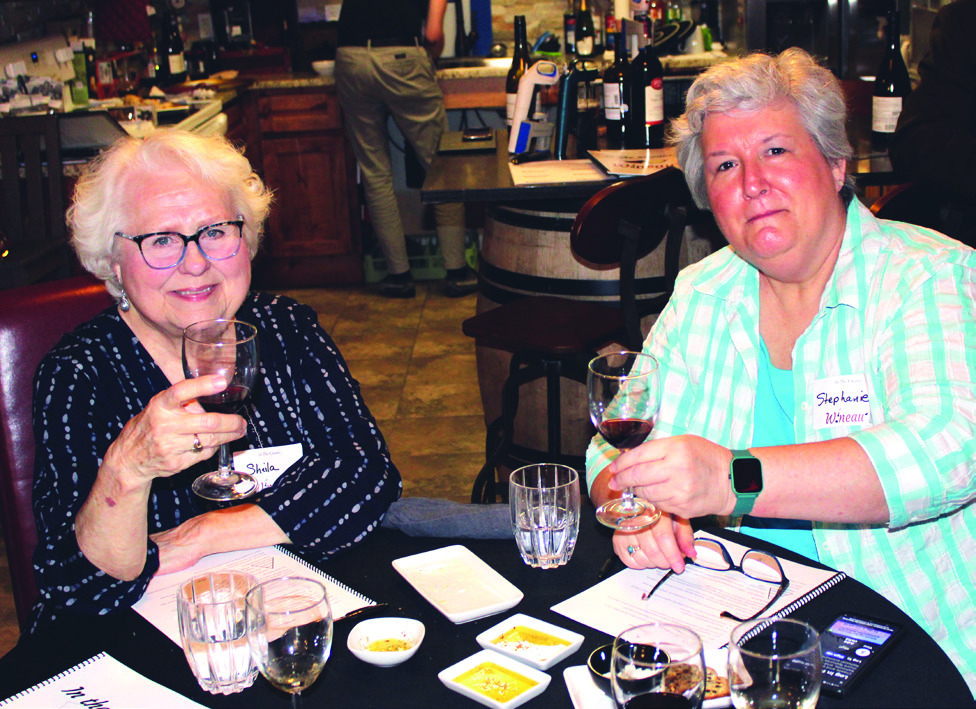
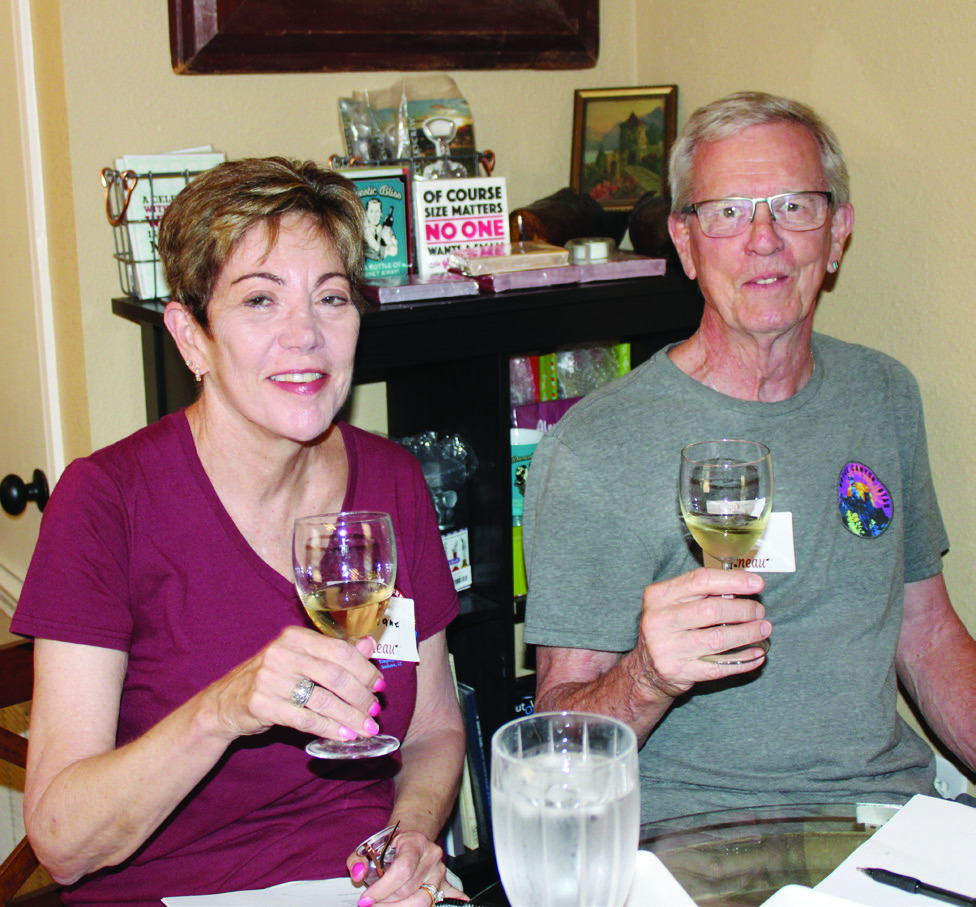
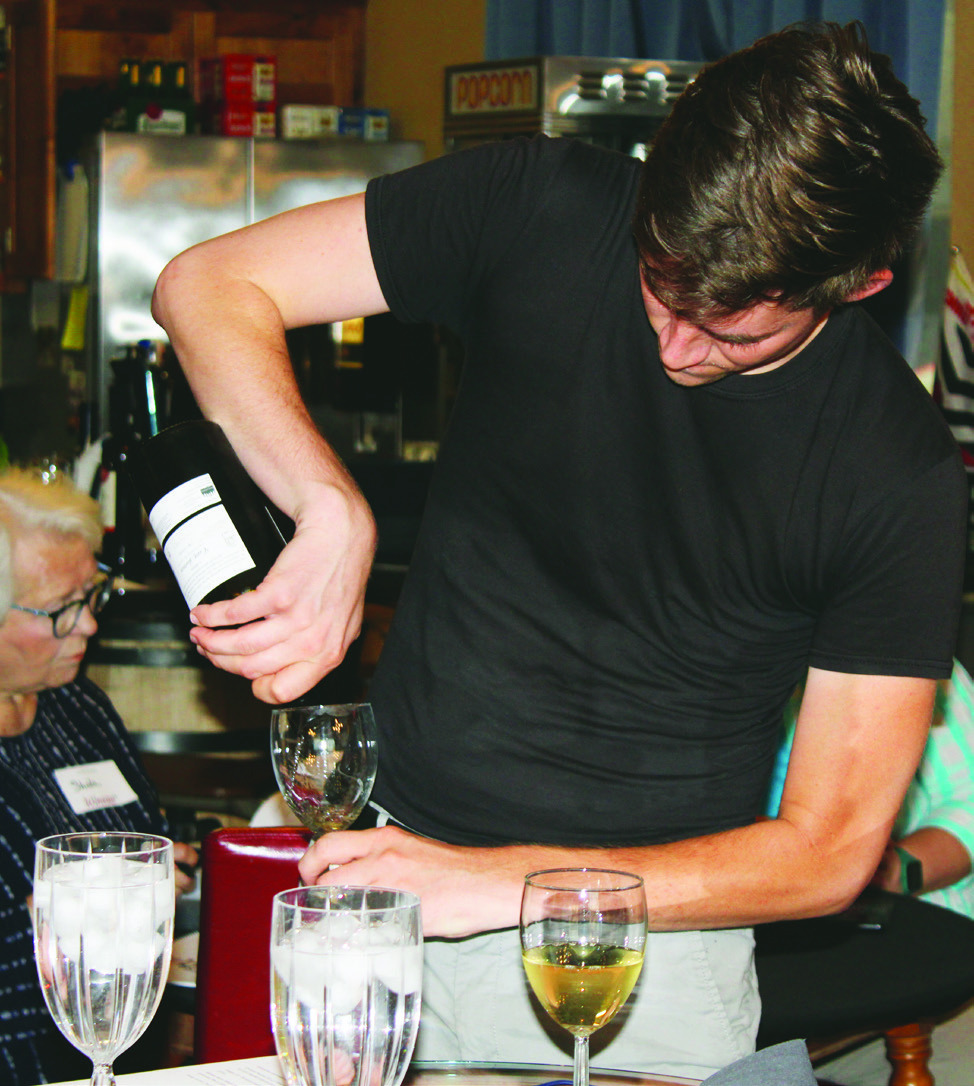
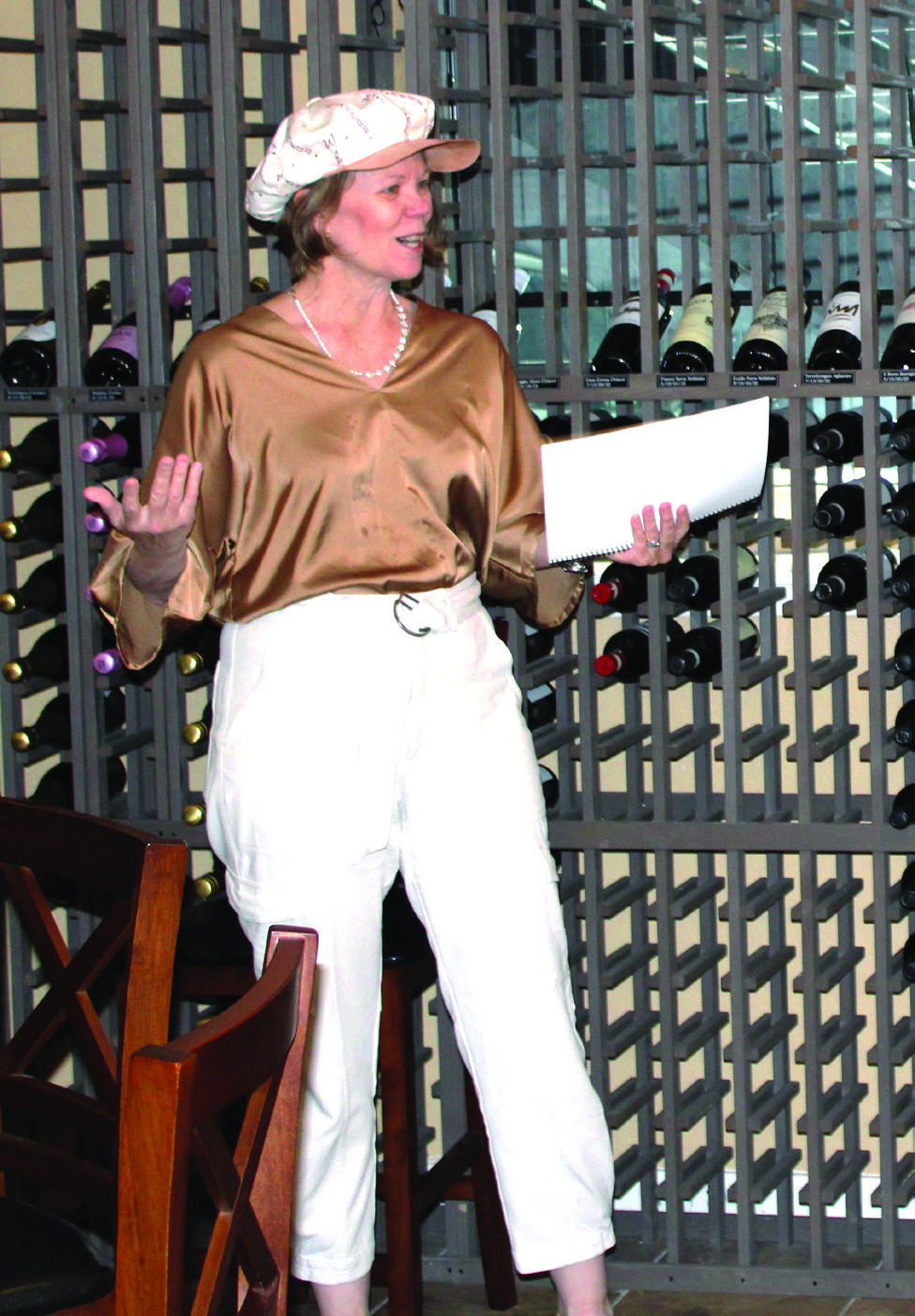
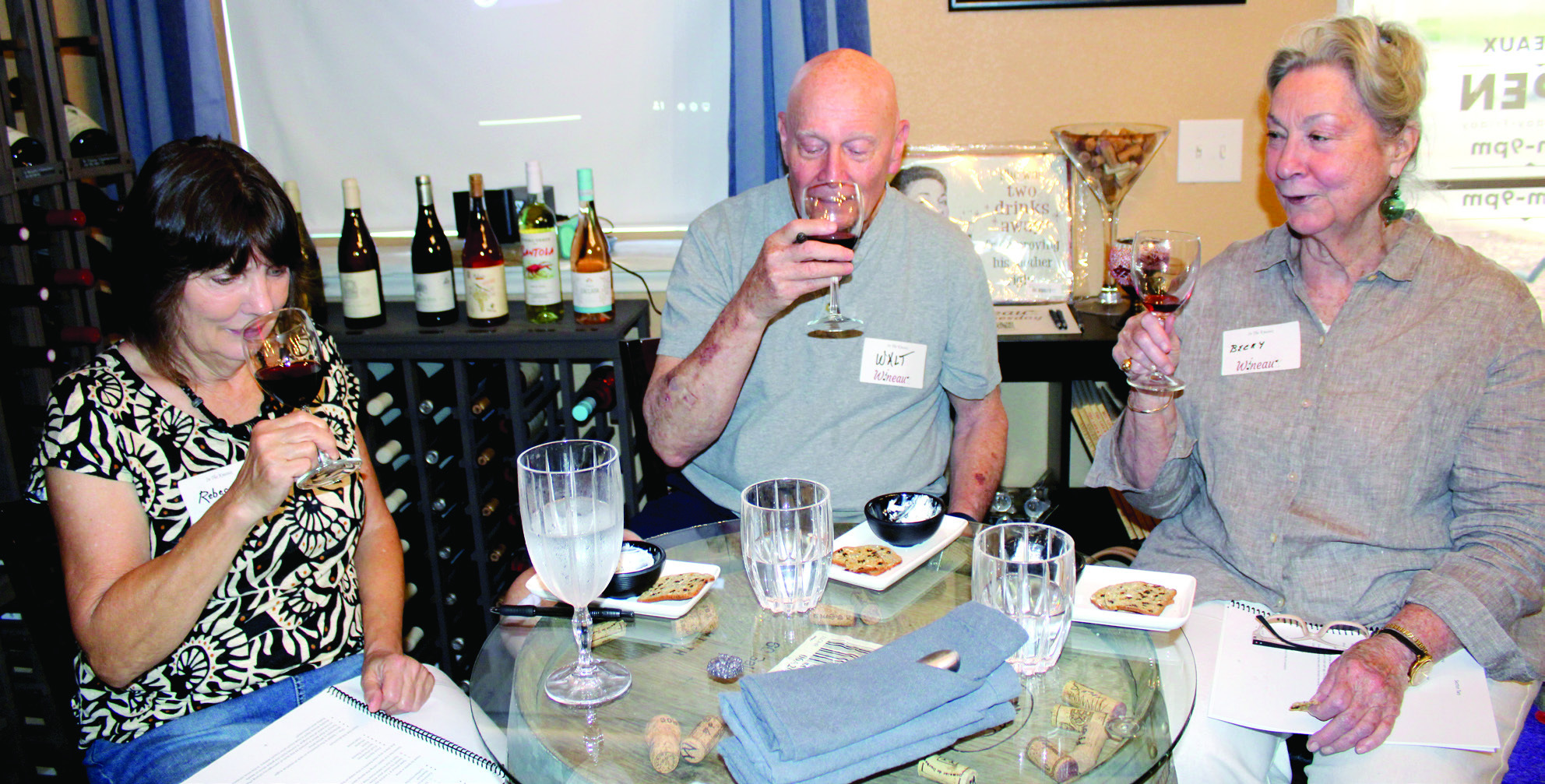
Top left, Diane Wallis and Bob Wallis swirling the wine to check for legs. Top right, Sheila Hargett and Stephanie Korcheck sampling the wares. Upper right, Rutherford Griffin, Jones’ son and Wineaux sommelier, pours wine for the lifelong learners. Lower left, Peggy Jones, Wineaux owner, teaching Lifelong Learners about wine. Bottom, Rebecca Montgomery, Walt Pilcher and Becky Duval Reese sample one of the wines. Daily Record photos by Shannon West


